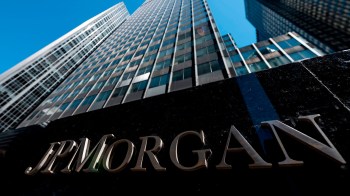In a Washington Post editorial today, JP Morgan Chase CEO Jamie Dimon says any bank, regardless of size, should be allowed to fail. But he argues the government should place no limits on the size of banks.
And I quote:
Our company, J.P. Morgan Chase, employs more than 220,000 people, serves well over 100 million customers, lends hundreds of millions of dollars each day and has operations in nearly 100 countries. And if some unforeseen circumstance should put this firm at risk of collapse, I believe we should be allowed to fail.
But Dimon says artificially limiting the size of banks makes no sense. Instead, he says the government should create a structure to “allow for the orderly failure of a large financial institution.”
Under such a system, a failed bank’s shareholders should lose their value; unsecured creditors should be at risk and, if necessary, wiped out. A regulator should be able to terminate management and boards and liquidate assets. Those who benefited from mismanaging risks or taking on inappropriate risk should feel the pain.
Why is Dimon saying this, and saying it now? The Wall Street Journal says it could be that Wall Street believes Congress is getting more serious about breaking up the banks:
Large financial institutions had mostly shrugged as lawmakers began offering amendments aimed at shrinking their size, but a collective panic ensued when word began spreading about a plan advanced by Rep. Paul Kanjorski (D., Pa.) to cut the big banks down to size.
“What I want to do is make an honest evaluation, and when we find these folks that are just too big that if they fail they’ll have to be bailed out and everybody knows it, we have to have a mechanism there to take them below that bar,” Rep. Kanjorski said in an interview with the Wall Street Journal earlier this week.
Dimon may be correct that size isn’t the problem. It’s interconnectedness. It’s over-leveraging. But the banks that held (still hold) the tangle of derivatives that helped bring down the economy are the largest banks. The Nation’s William Greider writes:
The leading sellers of derivatives are an exclusive club of five very large financial institutions–Citigroup, JPMorgan Chase, Bank of America, Morgan Stanley and Goldman Sachs–that hold 95 percent of the derivatives exposure among the largest banks (the total contract value exceeds $290 trillion). These are the same folks who toppled the global economy and compelled government to intervene with gigantic bailouts.
And on that front, Greider says the legislation in Congress is lacking so far:
…the “reform” legislation approved by the House Financial Services Committee on October 15 is a fiesta of exemptions, exceptions and twisted legalese that effectively defeat the original purpose. Only experts can divine the actual meaning of the bill’s densely worded provisions, and many of them have reacted with disgust. The “entanglements of derivatives exposures” among oversize banks “is the equivalent of the San Andreas Fault of our financial system,” veteran financier Robert Johnson testified at an October 7 hearing on the draft bill. If Congress does not disarm derivatives, he warned, it could lead to another cascade of failure that would give regulators no choice but once again to rush to the rescue of the banks dubbed “too big to fail.”
Derivatives. Size. Orderly failures — all potential for regulation.
So far, though, Congress has done TLTM: Too Little To Matter.
There’s a lot happening in the world. Through it all, Marketplace is here for you.
You rely on Marketplace to break down the world’s events and tell you how it affects you in a fact-based, approachable way. We rely on your financial support to keep making that possible.
Your donation today powers the independent journalism that you rely on. For just $5/month, you can help sustain Marketplace so we can keep reporting on the things that matter to you.


















